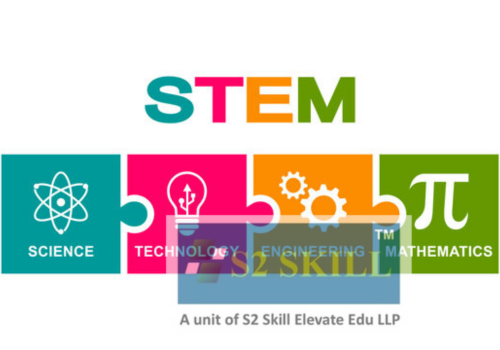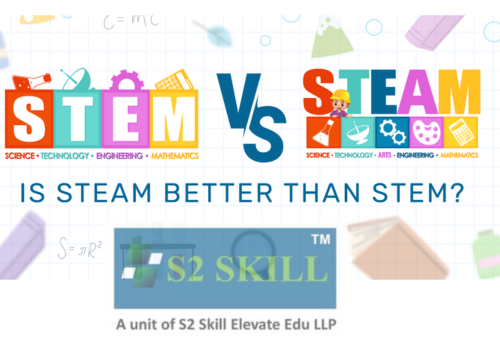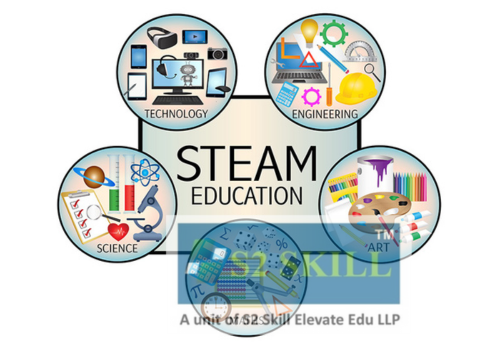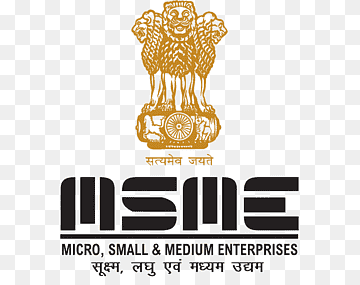STEM vs STEAM are two acronyms that have grown crucial.In influencing how students’ study and innovate in the quickly changing fields of education and workforce demands. The distinction might appear to be just one letter at first, yet the letter “A” for Arts opens up a world of opportunities.
Let’s investigate, which one is better STEM vs STEAM?
What is STEM?
Science, Technology, Engineering, and Mathematics are referred to as STEM. It is a method of instruction intended to get pupils ready for technical jobs that are in high demand. STEM emphasises problem-solving, critical thinking, and logical reasoning through systematic and quantitative approaches.
Why STEM matters?
- It stimulates technical development and innovation.
- It produces a workforce with the necessary skills for fields including research, engineering, healthcare, and IT.
- It highlights analytical, data-driven thinking.
In many nations, STEM education has been a top priority, and governments have funded initiatives to alleviate technological talent shortages and maintain competitiveness on a global scale.

What is STEAM?
By combining creativity, design, communication, and critical interpretation, STEAM expands the STEM approach to include the arts. The premise is that more comprehensive invention is produced when artistic and scientific thought are combined.
Why STEAM Matters?
- It fosters both technical proficiency and creativity.
- It promotes empathy, design, and storytelling—all of which are critical for user-centred design and product development.
- It mimics transdisciplinary cooperation in the real world.
Through artistic and humanistic viewpoints, STEAM aims to enhance scientific rigour rather than diminish it.
Difference between STEM vs STEAM
Aspects | STEM | STEAM | |
Focus | Analytical and technical abilities | Technical proficiency combined with design and creativity | |
Disciplines | Science, Technology, Engineering, Math | STEM + Arts (visual, performing, literary) | |
Problem-solving | Reasoned, methodical methods | Creative, comprehensive, and user-centred | |
Career readiness | Engineers, scientists, IT professionals |
| |
Learning style | Quantitative, experiment-based | Experiential, project-based, expressive |

Which one is better?
The objective determines the response.
- STEM offers the targeted, in-depth basis required if the goal is to train experts in high-tech domains.For example software development, aeronautical engineering, or data science.
- However, STEAM might be more suited to preparing students for the dynamic nature of contemporary difficulties. If the objective is to promote creativity, address practical issues, and design with empathy.
Consider firms such as Pixar, Tesla, or Apple. Their success stems from a smooth fusion of engineering, design, and storytelling rather than merely science or technology. This reality is reflected in education through STEAM.
A balanced perspective
Teachers and legislators might consider how to combine the advantages of STEM vs STEAM rather than picking one over the other.
Combining STEM (science, technology, engineering, mathematics) and STEAM (science + arts) can result in a more comprehensive, interesting, and creative project-based learning.
Students who study visual storytelling (arts) and coding (STEM) are more likely to produce software that is not just useful but also captivating.
Concluding remarks
We require both technical expertise and innovative thinking in the twenty-first century. Whether you’re a parent, teacher, student, think about how STEAM can improve STEM and make learning more humane and comprehensive.
As two sides of the same educational coin rather than opposing ideas, STEM vs STEAM are inextricably intertwined. STEAM adds creativity, emotional intelligence, and human-centred design to the fundamental basis of STEM. Which is composed of technical know-how, scientific rigour, and logical thinking.
True innovation arises not from discrete disciplines but rather from fusion of several ways of thinking that is becoming more interconnected. STEAM provides an approach to education that is complete and more prepared for the future. By fusing the creative potential of the arts with the analytical prowess of STEM. Therefore, the future of learning and problem-solving, where STEM powers the engine and STEAM provides it direction, purpose, and soul, lies in embracing both rather than picking one over the other.

STEM and STEAM are complementing frameworks rather than competing methods. Although STEM gives pupils essential scientific and technical abilities, STEAM’s incorporation of the arts foster’s creativity, empathy, and design thinking. Together, they create a comprehensive educational approach that equips students for a future. That requires both creativity and logic by fusing analytical accuracy with creative expression.




